
We recommend you visit the interactive version. The text to the right is provided for printing purposes.
|


|
|
Avian Foster Care
The brown-headed cowbird doesn't look like much of a villain. But this species and many other birds, as well as some insects and fish, are "brood parasites"—a phrase ecologists use to describe animals that skip out on parenting by depositing their young in the care of another. The unwitting foster parent raises the parasitic young as if they were its own and bears the considerable cost of feeding and protecting the babies. What tactics do animals use to dupe others into parenthood? Here, take a look at some of the tactics, from grisly competition to more subtle deception.—Rachel VanCott
|
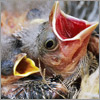

|
|
Cowbird
Cowbirds deposit their eggs in the nests of over 220 bird species. If the egg is accepted into the brood, the cowbird doesn't disrupt the family further. But if the egg is rejected, cowbirds trash the nest, destroying the host's eggs. This brutal behavior led ecologists to dub the species "mafia birds." Cowbird eggs hatch earlier than host eggs, and although the parasitic hatchling rarely attacks other nestlings, it cries louder, demanding a greater share of the food—which it almost always gets. This frequently leads to the starvation of host nestlings.
|
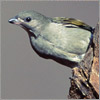

|
|
Honeyguide
Honeyguides are the most cutthroat type of avian brood parasite. When the female deposits her egg in host nests—usually in dark holes, where the parasite eggs can blend in—she sometimes attacks host eggs, breaking their shells with her beak and claws. Once the honeyguide nestling hatches, it uses the sharp hook on the end of its bill to finish off the remaining host young, puncturing eggs or slashing and stabbing the other nestlings. The host parent tosses out the bodies and raises the remaining, parasitic, hatchling.
|
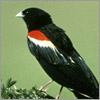

|
|
Indigobird
Indigobirds are subtle in their tactics. The female parasitizes only nests of the species that raised her, and she will only mate with males that have also been raised by this species. (She can tell because he's learned the song of their shared host parents.) The female's choice means that the resulting young will inherit qualities that match those of the host species, since both its mother and father were accepted into host broods. The nestling is born ready to blend right in with the host young.
|
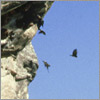

|
|
Cliff Swallow
Not all birds trick members of another species into raising their young. Some—called conspecific, or intraspecific, brood parasites—pass their young off onto other members of their own species. Cliff swallows, for example, often deposit their own eggs in the nest of another bird within the colony in an attempt to get out of the responsibility of parenthood. When they trick another bird into raising their young, birds have more time and energy to devote to mating and laying eggs.
|
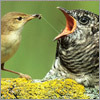

|
|
Cuckoo
The cuckoo is perhaps the best-known brood parasite. Natural selection has resulted in mimicry—cuckoo eggs look like host eggs. Yet the cuckoo's egg generally hatches sooner and its nestling grows faster than those of the host. Cuckoo nestlings also fight for their place in the nest. The nestlings are known to wriggle under host eggs and chicks and tip them out of the nest. As the sole survivor, the cuckoo nestling then monopolizes the host parent's care.
|
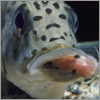

|
|
Cuckoo Catfish
The cuckoo catfish tricks cichlids into raising its fry. The cichlid is a mouthbreeder—it carries and protects the fry in its mouth until they are big enough to fend for themselves. After a cichlid has laid eggs, the cuckoo catfish darts in and lays her eggs among the host eggs, and the cichlid later scoops up and incubates all the eggs. Cuckoo catfish eggs hatch before the host eggs, which the catfish fry then consume. The catfish fry live, undetected, in the host's mouth until they are big enough to survive on their own.
|
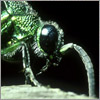

|
|
Cuckoo Wasp
The cuckoo wasp deposits eggs in the nest of another species of wasp while the mother is away. When the host mother returns, she loads the nest with provisions for her young and then seals the entrance, trapping her young with the eggs of the parasitic wasp. When the parasitic young hatch—almost always before the host young—they consume the food stored in the nest and sometimes devour the host larvae as well.

|
|
|
|
|
|




